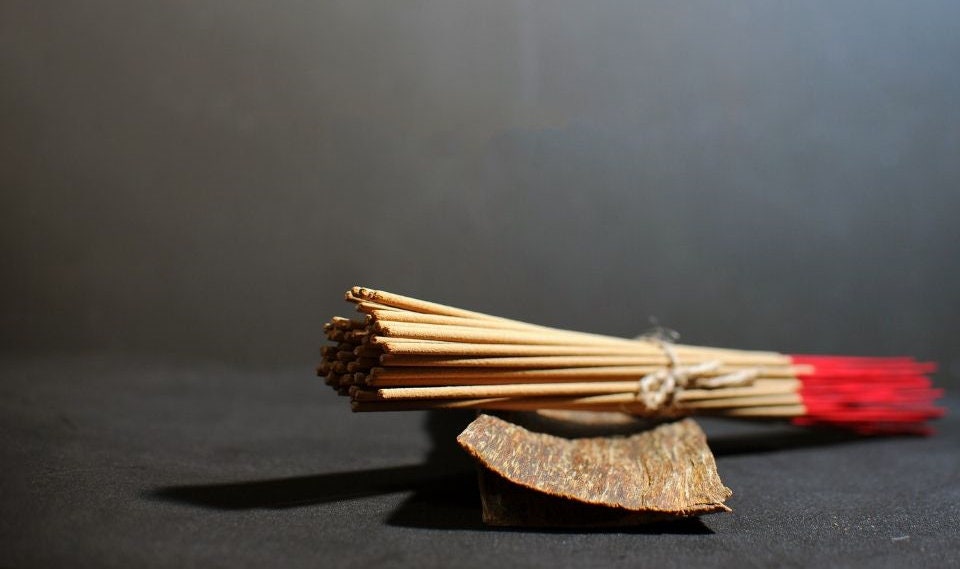The History of Agarwood: An Ancient Treasure of Fragrance
Agarwood, often referred to as the "wood of the gods," has a rich and fascinating history that spans across continents and centuries. Known for its distinctive, aromatic scent, this rare and precious wood has been revered in various cultures for its spiritual, medicinal, and aesthetic properties. This article delves into the origins, historical significance, and cultural impact of agarwood, offering an in-depth exploration that will captivate enthusiasts and newcomers alike.

Origins and Botanical Background
Agarwood, also known as oud, aloeswood, or eaglewood, is derived from the heartwood of Aquilaria trees, primarily found in Southeast Asia. When these trees become infected with a specific type of mold (Phialophora parasitica), they produce a dark, aromatic resin as a defense mechanism. This resin-impregnated wood, known as agarwood, is highly valued for its unique fragrance.
The natural formation of agarwood is a lengthy process that can take several years, making it one of the rarest and most expensive natural resources in the world. The Aquilaria species, which includes Aquilaria malaccensis, Aquilaria sinensis, and Aquilaria crassna, are primarily found in countries like India, Vietnam, Cambodia, Laos, and Thailand.
Historical Significance
Ancient Times
The history of agarwood dates back thousands of years. It was first mentioned in ancient texts from India and China, where it was used in religious ceremonies, traditional medicine, and as a luxurious perfume. In Hinduism, agarwood is referred to as "agaru" in the Vedas, the oldest sacred scriptures of Hinduism. It was burned during rituals to create a sacred atmosphere, believed to facilitate communication with the divine.
In China, the use of agarwood can be traced back to the Han Dynasty (206 BC – 220 AD). It was prized for its medicinal properties and used to treat various ailments, including digestive issues and respiratory problems. The Chinese also used agarwood in incense ceremonies, an integral part of their spiritual and cultural practices.
The Middle Ages
During the medieval period, agarwood's popularity spread to the Middle East through trade routes. It became an essential commodity in the Arab world, where it was known as "oud." Agarwood was highly sought after by royalty and the elite for its use in perfumes and incense. The Prophet Muhammad is said to have valued agarwood, and its use is mentioned in several hadiths, further elevating its status in Islamic culture.
The Silk Road played a crucial role in the dissemination of agarwood to the West. It reached Europe during the Crusades, where it was used in religious ceremonies and by the nobility. Agarwood's exotic scent and rarity made it a symbol of wealth and sophistication.
Cultural Impact
Religious Practices
Agarwood has played a significant role in various religious practices around the world. In addition to Hinduism and Islam, it is also revered in Buddhism and Shintoism. In Buddhist traditions, agarwood incense is burned during meditation and prayer, believed to aid in achieving a state of calm and focus.
In Japan, agarwood, known as "jinko," is used in Kodo, the art of appreciating incense. This traditional practice involves the ceremonial burning of agarwood, where participants "listen" to the scent and reflect on its nuances. Kodo is considered one of the three classical Japanese arts of refinement, alongside the tea ceremony and flower arranging.
Traditional Medicine
Agarwood has been used in traditional medicine systems like Ayurveda, Traditional Chinese Medicine (TCM), and Unani medicine for centuries. It is believed to have numerous health benefits, including anti-inflammatory, anti-asthmatic, and digestive properties. In Ayurveda, agarwood oil is used to balance the body's doshas and treat conditions such as arthritis, anxiety, and insomnia.
In TCM, agarwood is used to stimulate the flow of qi (vital energy) and relieve pain. It is also used as a treatment for respiratory issues, digestive disorders, and as an aphrodisiac. The Unani system of medicine, which has its roots in ancient Greece and was further developed by Islamic scholars, also recognizes the therapeutic properties of agarwood.
Modern Uses and Conservation Efforts
Perfumery and Cosmetics
In contemporary times, agarwood remains a highly valued ingredient in the perfume industry. Its rich, complex aroma is a key component in many high-end fragrances. Perfumers prize agarwood for its ability to add depth and longevity to scents, making it a staple in luxury perfumes.
Agarwood oil, or "oud oil," is also used in cosmetics and aromatherapy. Its soothing and grounding properties make it a popular choice for essential oil blends aimed at promoting relaxation and emotional well-being.
Conservation Challenges
The increasing demand for agarwood has led to overharvesting and the decline of wild Aquilaria populations. As a result, several species of Aquilaria are now considered endangered. To address this issue, conservation efforts and sustainable practices are being implemented.
Cultivating agarwood plantations is one of the primary strategies to ensure a sustainable supply. By artificially inoculating Aquilaria trees with the fungus that induces resin production, growers can produce agarwood more efficiently. These plantations not only help meet market demands but also reduce pressure on wild populations.
Additionally, international regulations, such as the Convention on International Trade in Endangered Species of Wild Fauna and Flora (CITES), have been established to control the trade of agarwood and protect endangered species. These measures aim to balance the demand for agarwood with the need to conserve natural resources.
Conclusion
The history of agarwood is a testament to its enduring appeal and significance across different cultures and time periods. From ancient rituals and traditional medicine to modern perfumery and conservation efforts, agarwood continues to captivate and inspire. Its unique fragrance and cultural heritage make it a true treasure of nature, deserving of both appreciation and preservation.
By understanding and respecting the historical and cultural importance of agarwood, we can ensure that this precious resource remains available for future generations to enjoy. As we continue to explore sustainable practices and conservation efforts, the legacy of agarwood will undoubtedly endure, enriching our lives with its timeless beauty and aromatic allure.
Source: Tita Art
